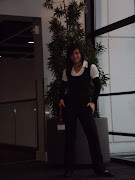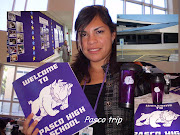 This is “Mrs. X”. She is a teacher of Spanish as a Foreign Language. Mrs X is a very good teacher, and a very intelligent person; but like all the people over the world, she doesn't know everything about education, neither how languages are most effectively learned. Mrs. X does not yet understand that people can learn a new language supporting themselves on their first language, and on their first culture, too. She ussually ignores her students' first language; besides, she tries to avoid all the contact that students may have with their L1. For example, she ussualy tells her "first level Spanish language learners" that she doesn't understand what they are saying to her in their first language; even, when the students cannot find the word they want to use to explain a complex concept; she acts as if nobody had talked to her, and she doesn't give them the opportunity to convey the meaning of that word in their first language in order to clarify their own ideas.
This is “Mrs. X”. She is a teacher of Spanish as a Foreign Language. Mrs X is a very good teacher, and a very intelligent person; but like all the people over the world, she doesn't know everything about education, neither how languages are most effectively learned. Mrs. X does not yet understand that people can learn a new language supporting themselves on their first language, and on their first culture, too. She ussually ignores her students' first language; besides, she tries to avoid all the contact that students may have with their L1. For example, she ussualy tells her "first level Spanish language learners" that she doesn't understand what they are saying to her in their first language; even, when the students cannot find the word they want to use to explain a complex concept; she acts as if nobody had talked to her, and she doesn't give them the opportunity to convey the meaning of that word in their first language in order to clarify their own ideas.I think that the teacher should be awared of what Freemen & Freeman (1998) say in their research about Bilingual Education: "supporting first language development is critical because students learn concepts best in their primary language" because it is important for her to know that "literacy and content knowledge developed in the first language transfer to the second language"; besides, students who are biliterate have more chances for getting academic success than students who are not.
For getting a better understanding of what I have been arguing, I am going to present you a series of links which may help you to get a clearer idea of what I have been discussing here.
http://www.csun.edu/~hcedu013/eslbil.html
Resent research
http://ourworld.compuserve.com/homepages/Jwcrawford/biling.htm
http://www.ericdigests.org/1997-3/bilingual.html
Video


















